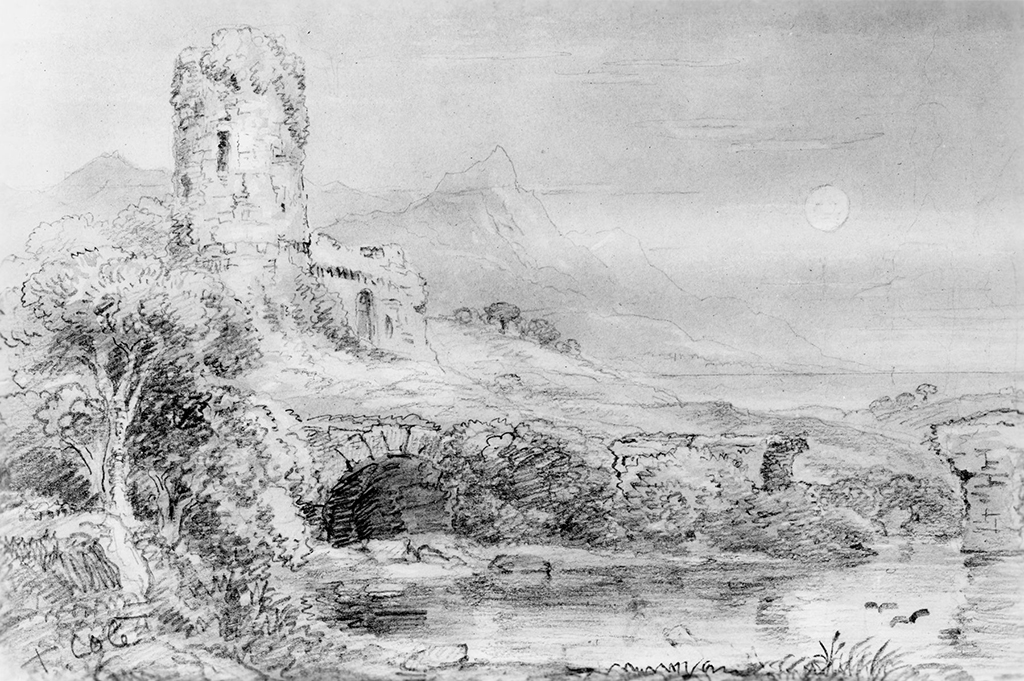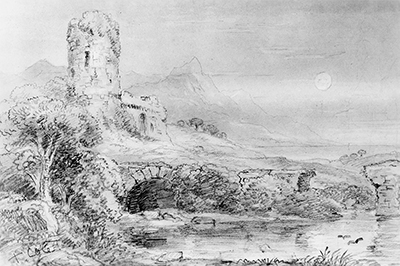Thomas Cole was entirely self-taught, both with his paintings but also his drawings. Landscape art is full of study sketches from famous artists on the move, be it Turner, Monet or as we find here - Thomas Cole.
The great names would all learn and practice their skills whilst out in the environments that so inspired them. Monet famously worked en plein-air, but artists had been doing similar for several centuries. Thomas Cole needed no encouragement to venture out into the wilderness and was naturally very comfortable within these surroundings. He wanted to find the most secret and secluded spots possible and would go to great lengths to find them - this proved tricky when carrying all his painting equipment and so it made sense to sometimes concentrate on drawing instead. These resources were also far cheaper too, requiring just a few pencils and a couple of sketchbooks.
Most of the Hudson River School artists would travel abroad in order to broaden their artistic minds but, in reality, there were endless sources of inspiration available at home. This huge and extraordinary country was still relatively undiscovered at that stage and these great creative minds took it upon themselves to explore further. They also produced work with the intention of defending what was there already from future human activities which were already becoming a concern to them all. They would intentionally leave out humanity from most of their paintings with the aim of showing just how beauty things would remain if left untouched.
A common practice for landscape painters is to study the same focal point from a number of different positions. This then allows the artist to understand better its surrounding components and also the impact of external factors upon on, such as lighting. Through fast sketching the likes of Cole can quickly document items from a variety of different locations and then refer back to these rough drawings when back in the studio, planning the final painting. It would be far too time consuming to do this stage entirely in oils. Adjustments, which were inevitable in this challenging form of art, could also be much easier to make back in the studio, where different solutions and oils would easily be on hand, as well as other tool for further techniques.
The tools used by Thomas Cole in his drawings was very much in line with other artists of this period. Indeed, we have also learnt a lot from his own student, another famous artist named Frederic Edwin Church. We heavily influenced the direction of his successful younger pupil and many of the artworks uncovered from Church's career were in completed in a combination of graphite and white gouache. They were known to have travelled frequently during their time together, often choosing to draw landscapes at this stage in Church's development. Cole clearly understood the importance of being a skilled draughtsman, from which all other techniques could then follow. Despite being untrained himself, he did feel it to the benefit of Church to receive such knowledge at this early period in his career.





